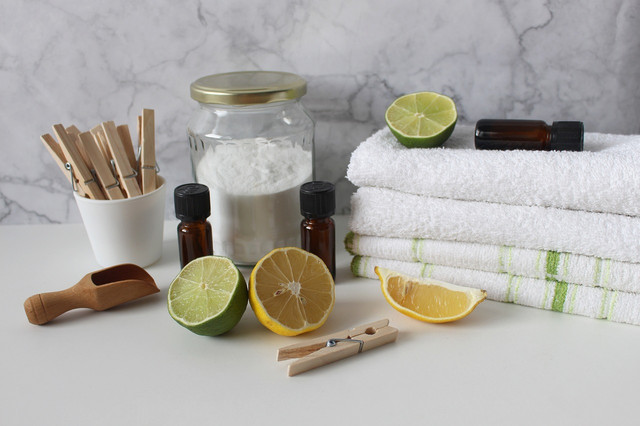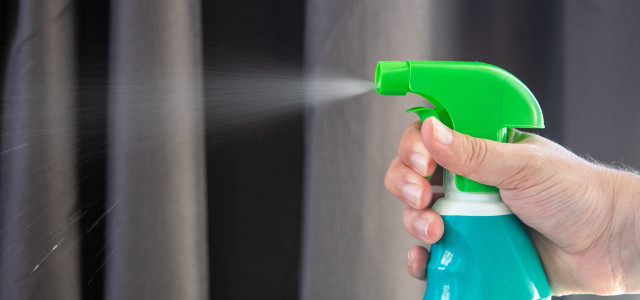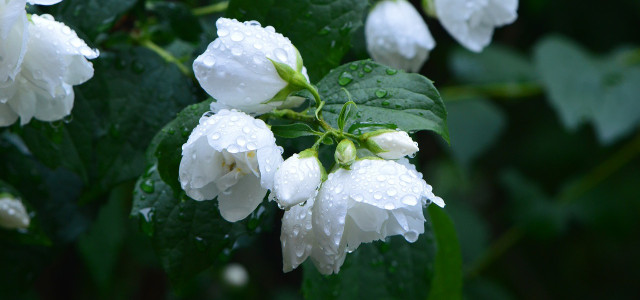Replace harmful chemicals with a beautifully fragranced and completely natural DIY linen spray. Read on to follow this easy step-by-step recipe.
Learning how to make your own homemade linen spray will keep your fabrics smelling fresh and clean without exposing them — or you and your loved ones — to potentially dangerous toxins and molecules. Chemicals inhaled from commercial cleaning and disinfection products have been associated with a variety of negative health effects. This is because many products we use in our homes contain volatile organic compounds and other molecules that can be extremely harmful to us and the environment.
34.7 percent of adults in the US have reported health problems — including migraine headaches and breathing issues — after being exposed to emissions from fragranced products. Commercial linen sprays are generally scented, and these reports are echoed all over the western world. Nationally representative population-based studies conducted across the US, Australia, the UK, and Sweden have uncovered a huge range of adverse health outcomes associated with exposure to fragranced products including
- respiratory problems
- mucosal symptoms
- migraine headaches
- skin problems
- asthma attacks
- neurological problems
- cognitive problems
- gastrointestinal problems
- cardiovascular problems
- immune system problems
- musculoskeletal problems
DIY Linen Spray vs. Fabric Softener

If you are thinking about just using fabric softener instead — think again. There are several ways in which fabric softener is bad for the environment and for human health. Many commercial linen sprays and fabric softeners contain something that your homemade linen spray will not — cationic surfactants. These toxins might soften our fabrics beautifully, but they are considered to be among the most challenging emerging contaminants by researchers examining their risks and toxicity.
Surfactants are continuously leaked into the environment through wastewater treatment plants and are damaging healthy ecosystems. Surfactants should be considered toxic to aquatic organisms, even at low concentrations. To eliminate these compounds from your life and our water systems, switch to an all-natural homemade fabric softener or try out some of our 10 eco-friendly substitutes for fabric softener instead.
How To Make DIY Linen Spray



The beauty of making your own natural DIY dusting spray is that there are no rigid rules to follow. Just mix up your ingredients, shake, and use. All you will need is the following:
- Distilled water
- 25-40 drops of essential oils — depending on the size of your spray bottle.
- An empty spray bottle — ideally a dark glass bottle to preserve your oils for longer. Reduce consumption and use a recycled old bottle if you have one. Reuse and recycle old glass and plastic spray bottles at any opportunity to save waste, but don’t forget to rinse old spray bottles thoroughly to remove any residual toxins.
- Vodka or witch hazel (optional) — to preserve essential oils and facilitate them staying mixed with water. If you want to skip this step and simply shake the water and the oils together, you can. Just remember that if you do, your DIY linen spray won’t last as long, so try to make only what you know you can use.
Mix your DIY linen spray to suit your room, your textiles, your clothes, and your mood. Essential oils are associated with many other benefits and smell delicious too. Match your blend to your needs or mix up a selection you can pick and choose from.
Homemade Linen Spray Blends



Bedroom Bliss Blend
Lavender has long been associated with a restful state and will leave your bed linen with that subtle smell of sleepy summer. If you do suffer from sleep difficulties, try a blend of lavender with Roman chamomile and neroli at a ratio of 6:2:0.5 drops. This mixture has been shown to improve sleep quality and reduce anxiety in patients in intensive care settings and is recommended by the Sleep Foundation. The joy of a DIY linen spray is that it can be used on your bed, mattress, and other textiles in your bedroom for a truly tranquil retreat.
Dust-Busting Drizzle
Homemade linen spray can tackle dusty furniture and flooring that can be difficult to wash, refresh or rejuvenate. Research has found the following commonly-used oils to be effective, eco-friendly, and biodegradable agents for the control of house dust mites:
- Clove
- Chamomile
- Rosemary
- Eucalyptus
You can mix some or all of these oils into a dust-busting DIY linen spray that smells refreshing and clean, as well as combats dust mites. You could also use your oils to make your own DIY dusting spray to keep the rest of your home clean and dust-free too.
Airway to Heaven
If you want your linen to smell icy fresh and airy (and help open your airways instead of damaging them, unlike commercial linen sprays) then mix equal parts eucalyptus, peppermint, and tea tree oil into your blend. Tea tree oil’s antimicrobial properties will also help fight off bad odors for longer.
The Bug-Blaster
Don’t use chemicals to repel irritating mosquitos and insects — use your DIY linen spray on your clothes instead. You will smell too good to bite with a natural repellant for mosquitos! Citronella, lavender, lemongrass, clove, tea tree, peppermint, and catnip essential oils all have repellant properties without the toxicity of synthetic repellants.
There have been occasional reports of negative reactions after excessive use of repellents containing N,N-diethyl-meta-toluamide (DEET) — the chemical commonly used in insect repellent creams. These effects included seizures, uncoordinated movements, agitation, aggressive behavior, low blood pressure, and skin irritation. No such reports have been made about essential oils.
Best for Zest
If you want your household fabrics and clothes to radiate the sweet citrus scents of nature’s favorite cleansers, try an equal mixture of lemon, lime, and sweet orange. Unlike commercial cleaners, citrus oils have been scientifically proven to be generally safe to use with negligible toxicity to humans.
Florals, Fragrances, and Freshness
When it comes to fragrances, essential oils offer a wide variety of choices. Many essential oils are considered safe and effective natural sources of fragrances and do not carry any health risks. If you are a floral fan, geranium and rose are a particularly elegant mixture, but you can mix and match to suit your own nostrils’ favorites. Patchouli has a very distinct scent and pairs well with vanilla, orange, and sandalwood. You will find your favorite by mixing, matching, and experimenting with your homemade linen spray.
Read more:
- Make Your Own Laundry Detergent in 6 Steps
- Washing Clothes with Vinegar: Benefits of Adding Vinegar to Laundry
- Black Seed Oil Benefits: A Natural Panacea
Do you like this post?







